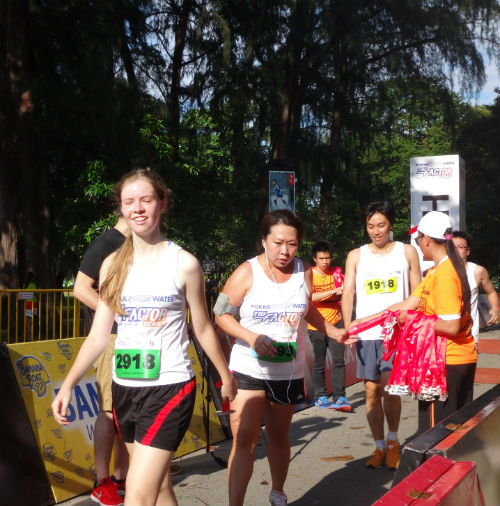Many runners who complete a marathon may for example, find that their GPS watch measures 43km rather than the advertised 42.195km. But runners need not always end up running more than the advertised race distance – and ruining their chances of a personal best, as a result. Here are some tips on how to do so.
Run along the innermost part of every turn during the race
A marathon is 42.195km long. As a result of this long distance, the marathon route is never a single straight line from Point A to Point B. Rather, it would almost surely comprise of many twists and turns and curves. So when you come to a turn, take the inside of the turn and turn the corner in the shortest distance possible, while still staying on the recommended course. Note that this is the part of the turn that is nearest to the kerb. For example, if you liken it to a 400m stadium running track, you will notice that the turn for Lane 1 is typically shorter than that of Lane 8. This same logic applies to the turns on the road too.
However, at the same time, make sure that you do not stray from the course while you are running – like what race cheats would do. As long as you don’t do so, you are a valid and true finisher of the race, regardless of whether you ran 42.195km or 43.5km.
Do note that if you run in the middle of the road, or the outside portion of the turn, you will almost certainly end up running more distance compared to someone who ran on the innermost part of the curve on the road. This can add up to an additional 12 metres per turn. And if you look at this in the perspective of a 42.195km full marathon, which will certainly have several turns along the way, that can add up to quite a lot – and determine whether or not you get a personal best.
Avoid weaving in between runners
If you keep weaving in between runners and swerving from the left to the right side of the road to get to the hydration stations and to pass slower runners, you will end up running more distance compared to someone who stayed at the same pace throughout the race and ran along as straight a line as possible.
It may not sound like much to you, but if you add up the constant weaving in and out, this may add an extra 400 metres to your race. And this extra 400 metres can mean the difference between achieving a personal best or not.
So next time, instead of weaving in and out to pass runners who are slower and to get to the other side of the road for a sip from the hydration stations, try and find someone who is running at your targeted pace and stick to this person or group of people throughout the whole distance. The race pacers will come in useful here, if they are running at your intended pace. Not only will they help you to stay on pace, but they will also prevent you from swerving and unintentionally adding some extra mileage to your race distance.
The route was not measured wrongly
In conclusion, next time, if you find that your GPS watch measures, for example, 43.2km rather than 42.195km, do not immediately jump to the conclusion that the race organisers added extra distance to the marathon. It could have been because you were weaving in and out many times during the race – or you unknowingly ran on the outermost part of some of the turns along the route. So do bear these guidelines in mind for your next marathon run.


I still have to test my theory, but it seems my Ambit 2S assumes I’m running on a flat surface. It does measure altitude as well as ascent and descent but it probably doesn’t count them as distance ran. In one of my past races, my watch measured about 36KM where it’s supposed to be 42K. And this was on top of the mountain where there are ups and downs… I mean really crazy ups and downs. So, in this case, my GPS could be wrong?